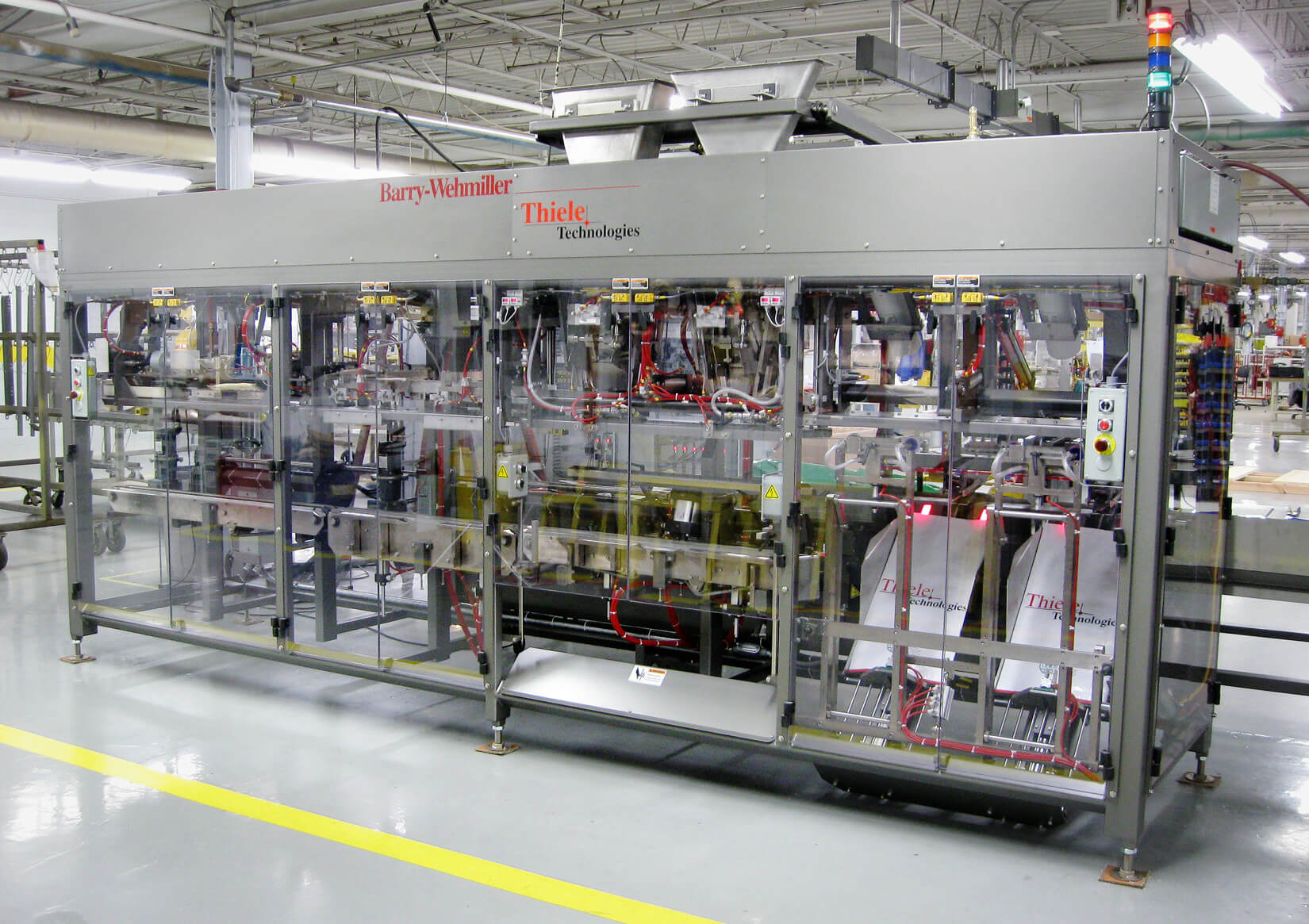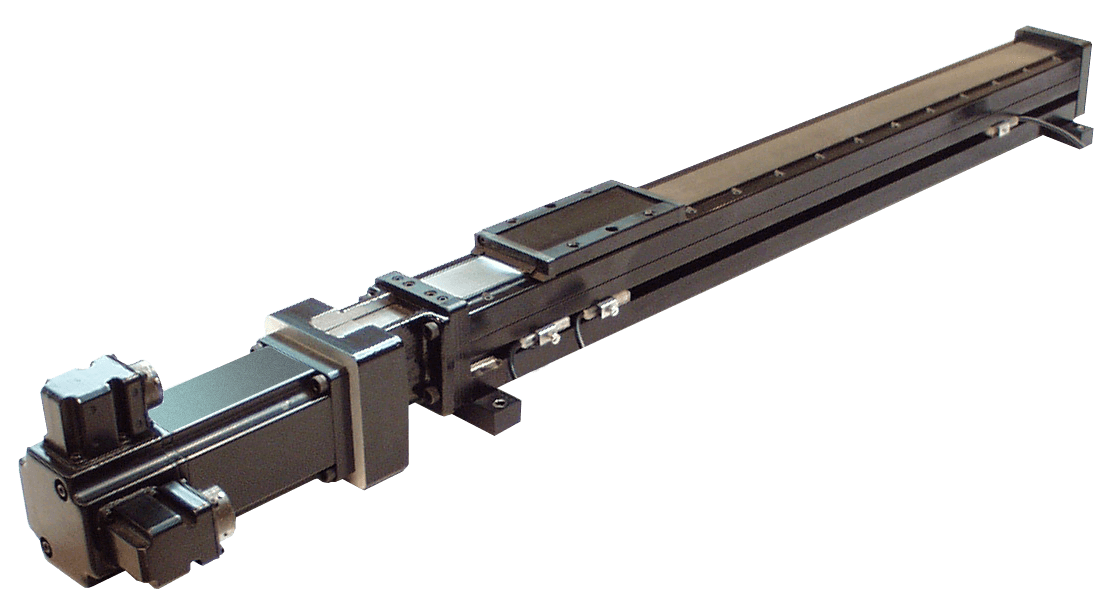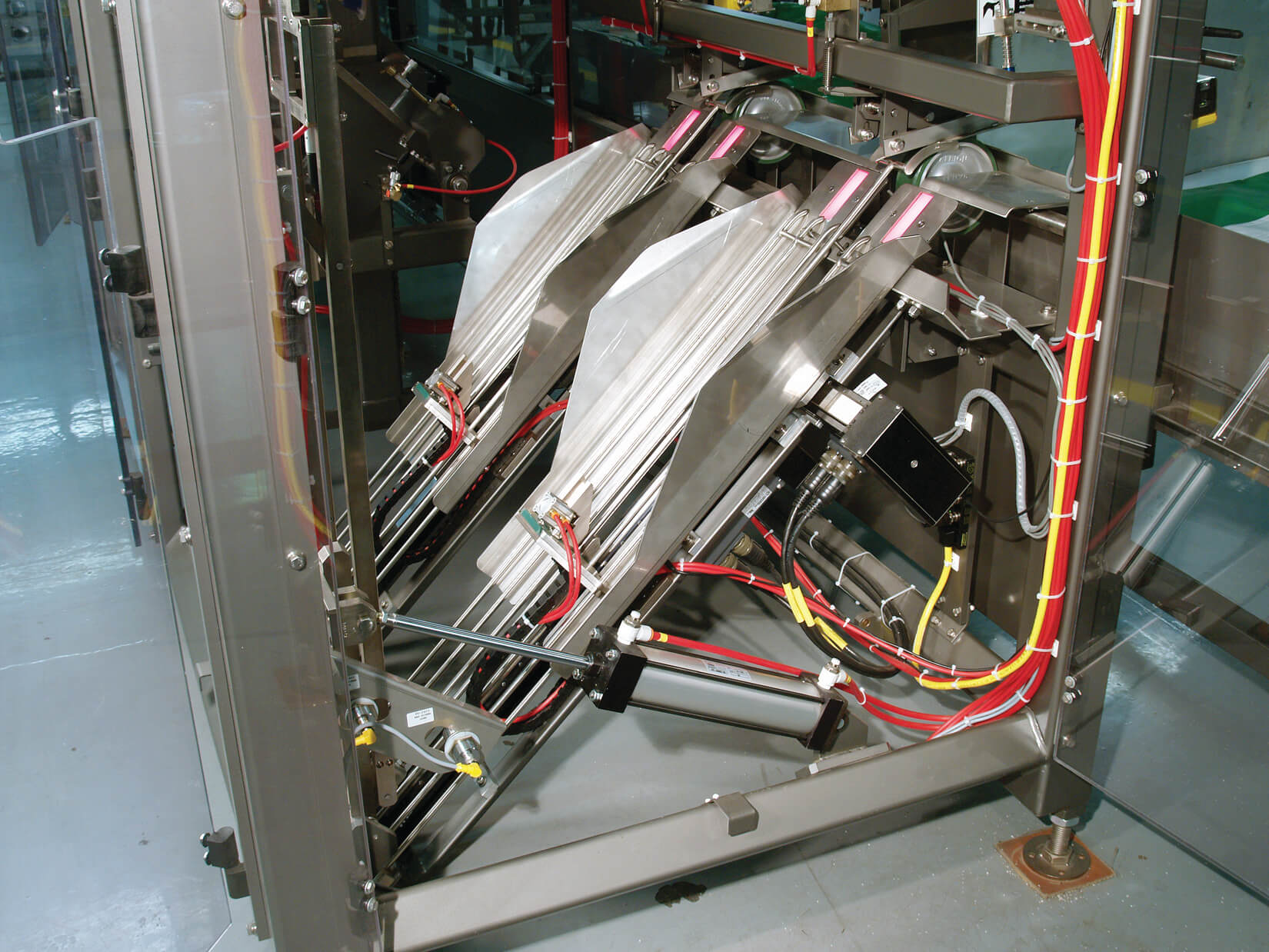In the bag
By Ryan Klemetson on September 7, 2021

Design flexibility solves packaging problem
Speed and accuracy determine the success or failure of a packaging system. Anything that slows the system (machine changeover, inconsistent product, etc.) affects the bottom line. Here’s how one packaging machine manufacturer applied some design ingenuity and combined it with the flexibility of Tolomatic electric actuators.
This machine builder serves customers in the diverse bulk-materials processing industries. The modular bag-filling and sealing operation is designed to measure, fill and seal bags containing anything from pet food to salt, sugar, dirt, seed, fertilizer or animal feed.
The bagging system worked fine as long as the size of the bags was consistent. No need to adjust machinery to compensate. But then customers began to switch to low-cost bags, which had more variation in size, and that slowed the production process.
The bagging system was automated, except for one key section—a tray that positions the empty bags before they are picked up and inserted into the filling line. When using high-quality bags with consistent dimensions, the trays required only a simple manual adjustment at the start of a run. However, the length of the lower-cost bags varied by as much as three-quarters of an inch. Because of the inconsistent dimensions, some bags would not position accurately, resulting in improper filling and sealing (the bagger will handle bags from 11 to 19 inches wide and 16 to 41 inches long).
With input from Tolomatic, the machine builder’s engineers devised a ‘bag-top reference mechanism’ that compensates for the varying lengths. Four modified-standard Tolomatic B3S10 rodless electric screw actuators precisely position the incoming empty bags before they are inserted into the filling/sealing line. The bagging system now automatically compensates for variations in bag dimensions and eliminates manual setup when changing bag sizes.
Design flexibility is important

Flexibility is key to the design of the actuators. The bagging systems must be configured differently for each customer application. The modified B3S actuators provide multiple motor and drive configurations, multiple stroke configurations, manual adjust, and right- or left-hand drive. Because of this flexibility, the machine builder and their customers achieve the required accuracy and speed.
In addition, the robust design includes a stainless steel band that seals the actuator as it moves protects the internal parts from dust, dirt and corrosion and reduces maintenance better than other designs. This is very important when bagging products like salt, dirt or fertilizer.
How it works
Two of the actuators, each one operated by a separate servomotor, adjust the vertical position of the bags. As bags are loaded into the staging trays, the vertical actuators catch the bags and lower the bag tops to a precise reference point determined by two video cameras controlled by the system’s PLC.
At the same time, the bags are centered in their trays by two horizontal B3S10 modified actuators. Each horizontal actuator has two carriers riding on a screw with right-hand threads on one half and left-hand threads on the other half. As the screw turns, each pair of carriers moves toward each other to center the bag in the tray. The two actuators are joined by a coupler and are operated by one servomotor connected by a compact 180-degree Tolomatic belt drive. Once the bags are vertically aligned and centered, they are picked up by a pneumatic arm and inserted into the filling/sealing line.

In addition to compensating for varying bag dimensions, the new automated bag-top reference mechanism allows an operator to change the size of the bag being run with the simple touch of a button. The programmable actuators also allow the packager to incorporate automated adjustability into bag size recipes that help speed machine changeover. This feature enables rapid change-over between product sizes and ensures repeatability previously dependent on the operator.
The rodless design and the ganged actuators operated by a single motor saves space. The compact design allows operators to replace the manual tray adjusters without significantly modifying the design of the bag trays.
Modified-standard actuators keep costs down
While many of the other actuators in the bagging system are pneumatic, the packager wanted to use electric screw actuators for the bag trays because they are faster and more accurate. However, an off-the-shelf solution was not available. Tolomatic worked with the machine builder to provide an affordable modified solution.
Improving repeatability was key objective
The new design meets the machine builder’s criteria for repeatability because it automatically compensates for variations in bag length and width and eliminates filling and sealing problems. The design tolerance for positioning the tops of the bags is only +/- 0.031 inches, and the packager can maintain that precision even when bag dimensions vary.
Thinking about switching from pneumatic cylinders to electric actuators? Download our white paper comparing the two technologies.
Tolomatic engineers are happy to discuss your application. Contact one today!
Visiting PackExpo? Stop by Tolomatic’s booth # SL-5836.
